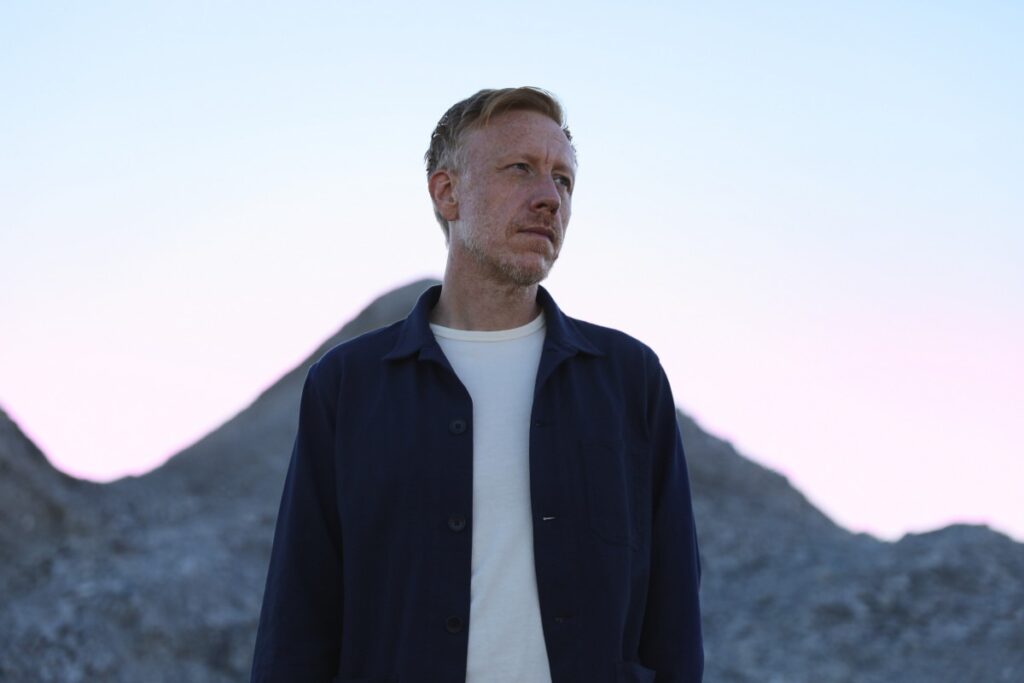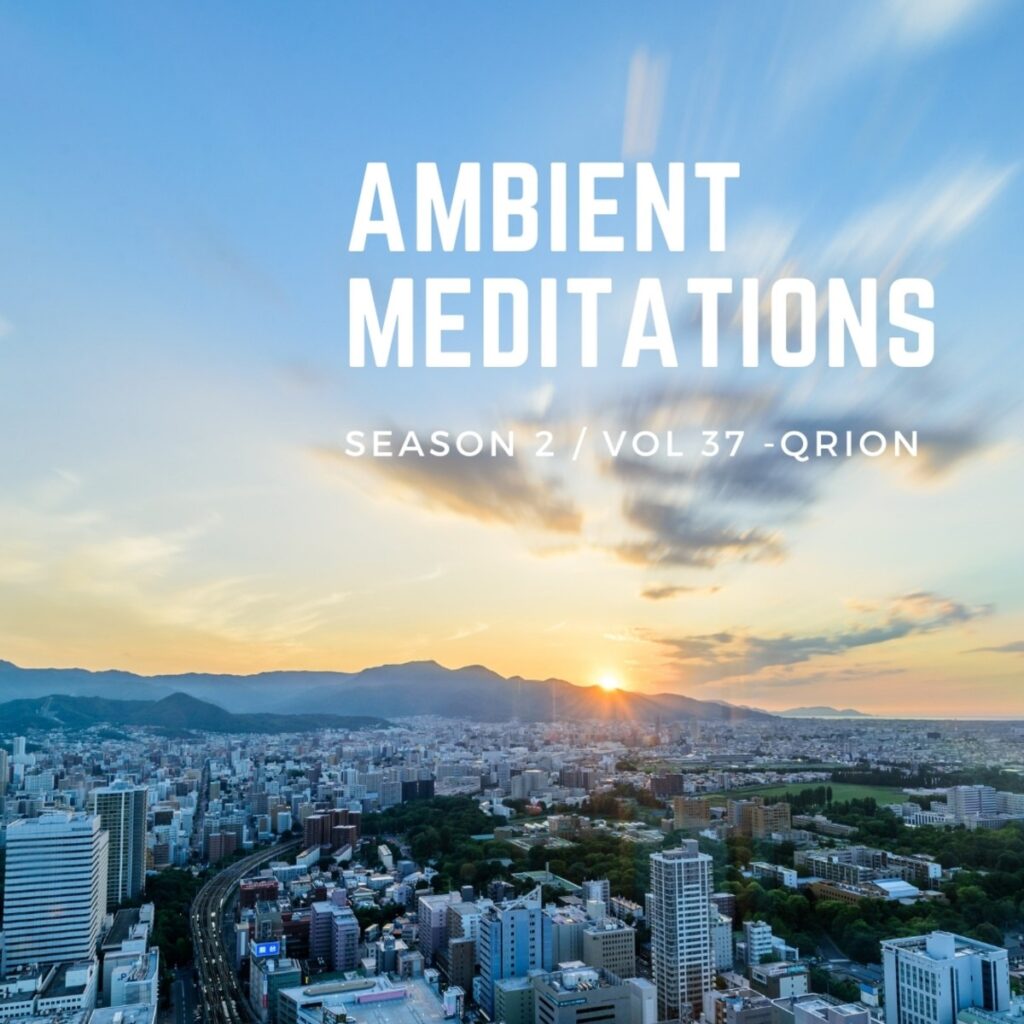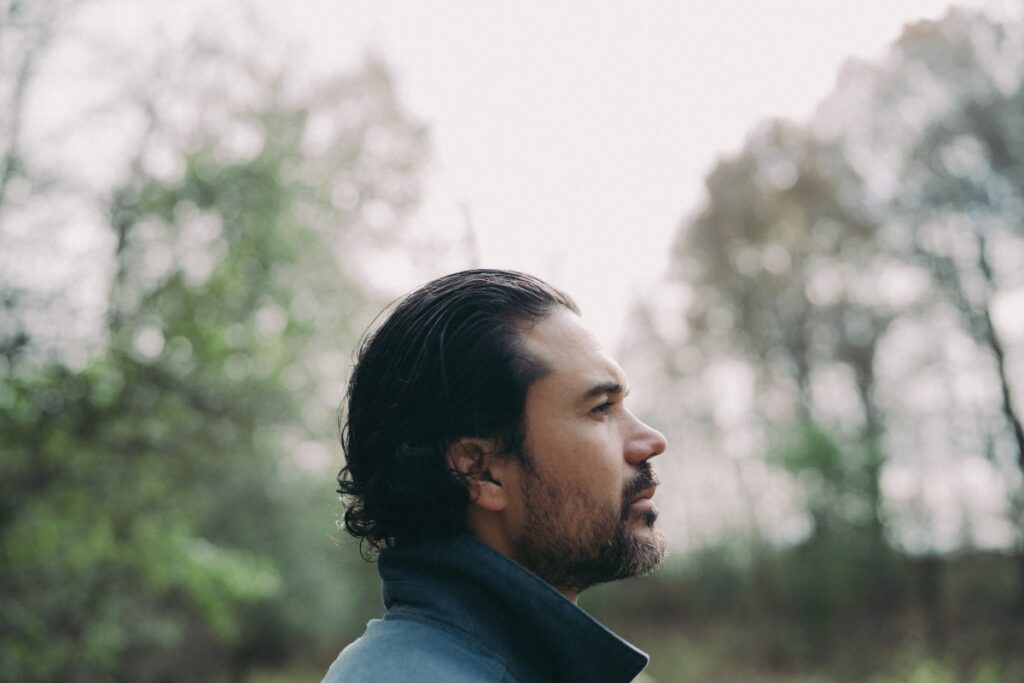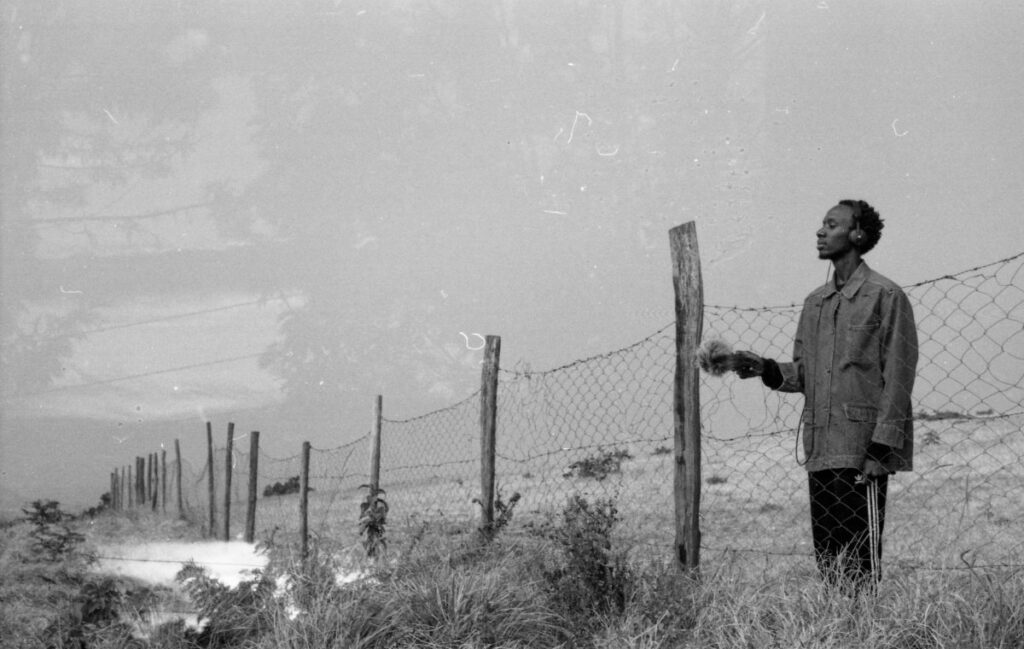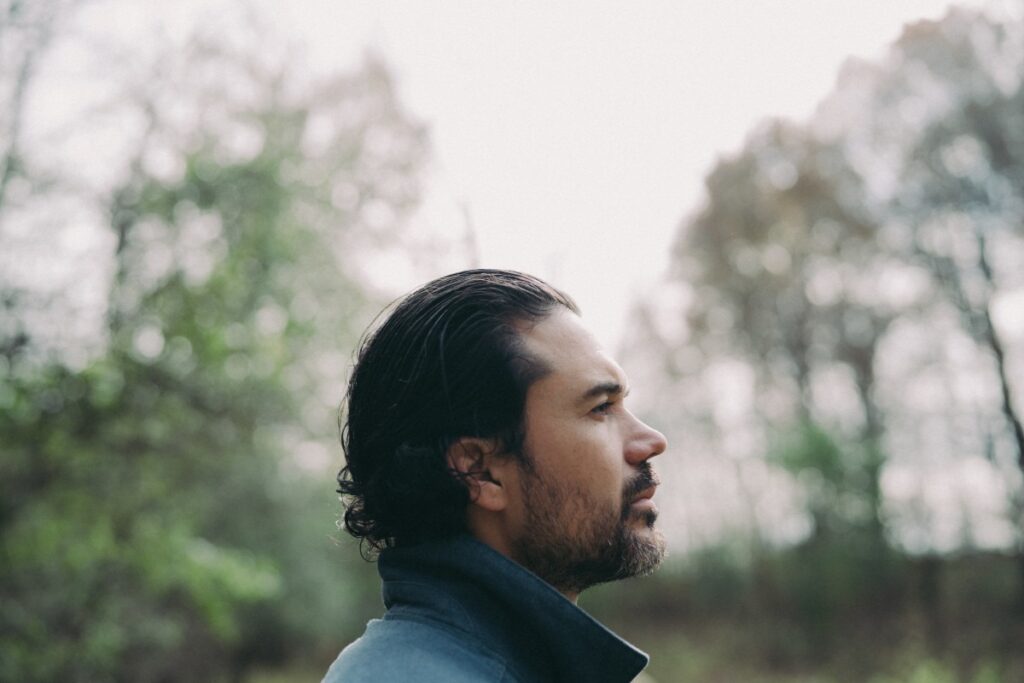Member of Canadian indie rock band Library Voices, Michael Scott Dawson, has delivered a new solo project, releasing a meditative, ambient album titled Nowhere, Middle of. Working with field recordings, old guitars, bicycles, cassettes, public art, pianos and a bunch of synths, Dawson creates an immersive world that is both dreamlike and relaxing.
The album came after a scary bout of vertigo that left him unable to create or listen to music. Library Voices had a long string of unfortunate events ranging from being robbed, floods and assaults and that poor luck seemed to follow him on his solo ventures.
The album is influenced by the outdoors with field recordings from Dead Horse Canyon in Utah, or birds in London one early morning, while “Estevan Skyline” pays quiet homage to Dawson’s prairie hometown in Saskatoon. Some of the album is autobiographical in nature as he delivers something patient, peaceful and calm. To get more into the process behind the album and his own ideas for the nine songs on this record, Dawson did a Director’s Cut to break down each track.
Listen to the album Nowhere, Middle of below as you read and get a copy here.
01. Superheaven
I have a tendency to second-guess creative decisions the moment I have to commit to them. I’m probably not alone in this. “Superheaven” as a title was definitely one of those moments. Attempting to talk about all of these songs with any degree of intimacy will probably be another.
“Superheaven” was actually the working title for the entire project before I ever set out to make an album. I was just creating little synth sketches and had titled them Superheaven 01, Superheaven 02, etc. In retrospect, this was a file management nightmare and made it nearly impossible to keep track of what was what. The foundation of the song as it appears on the album was rescued from the ashes of those early sketches though.
Through that initial exploration I built up a palette of tones and textures that I would lean on heavily throughout the recording process. I was working from such a clean slate that I was sincerely just being playful and building sounds that resonated with me. One distinct moment, which features prominently in this song, was coming across a sweet spot on the release of a synth that left each chord resolving with a pop that sounded similar to a plucked string or a bad tape loop edit. I have a couple old Tascam PortaStudio four-tracks that I also used a lot on the album and this song was the first that I successfully married that pop from the synth with the ones from my cassette loops. That combination of sounds accompanied by granular piano became a major part of what make the record feel cohesive.
02. Quality of Hope
This album is by far the most personal thing I’ve ever made. I know that’s what everyone says about everything that they make and it’s likely a strange proclamation about a quiet, ambient record but from the onset I was making things just for me. At some point I did set an objective to complete an album, but even then I gave very little consideration to actually releasing it. It was just something I felt compelled to make for my own wellbeing. It came at the tail end of a long struggle with vertigo that had been impacting my quality of life and my ability to make or listen to music.
I want to make music that sounds like how I want to feel: peaceful, patient, calm and curious. Over the years I’ve played in a pile of bands. Probably too many if I’m being honest. In nearly all of them I was also the lyricist. I love exploring language (and hope one day to take a stab at writing a novel) but ultimately with a song you’re just trying describe feelings, emotions, and moments in as few words as possible. You’ve got maybe 8 or 12 lines for a verse and 4 for a chorus to get your point across. It was my objective to take as much time as each song needed and try to create a feeling rather than describe one.
I was trying to detail this song the other day and this was the best I could come up with: I spend a lot of time thinking about our quality of hope. Perhaps worrying about it is more accurate. In my own strange way, this song is my attempt at crafting something that feels hopeful. I don't think hope always needs to be a soaring string section or pumping fists. Sometimes it should be slow, patient, and gentle movements.
03. London, 4AM
London isn't somewhere I would typically place adjacent to descriptors such as peaceful or restorative. The song was built around a recording of birds singing and slow rain falling in a courtyard outside the open window of a rented room in the wee hours of the morning. I was staying near King's Cross and had fallen asleep to the fresh hell of loud traffic, loud drunks, and amplified buskers but woke up completely jetlagged at 4AM to discover a rare moment of tranquility in the city. The next thing I knew I was hanging out of a third story window in my pajamas trying to capture it.
My friend Hannah Barnes shot a lovely video to accompany this song of her son playing in the woods behind their house in Northampton.
04. Dead Horse
For as long as I can remember I’ve been drawn to what I guess would be considered errors or flaws in audio equipment and recordings. I just like to see through those cracks. I think it’s part of what makes music human. In many ways, my work is a celebration of this.
I remember playing in shitty punk bands as a kid, we’d be trying to record demos with our garbage gear and the radio would start coming through one of our amps. Of course, the studio owner is saying, “We’ve got to get rid of that! Are you plugged into a power bar? What pedals are you running through? Try a different guitar through that amp and see if it still happens…” and meanwhile I’m thinking we should record it. Let’s just sit here all day listening and try to catch a special moment to make part of the song… Anyway, I don’t even remember clearly what signal chain I was running while working on this song but suddenly a radio signal came through my headphones and I was instantly transported back to that teenage moment. It happens in the last section of the song and although I’m not certain what was generating it, I do remember I used Montreal Assembly’s “Count To Five” into a Cooper FX Outward to manipulate the voices.
“Dead Horse” takes its name from Dead Horse Point State Park in Utah. Last summer my wife and I took a road trip to explore some of the National Parks around the area. At that point I was already quite deep into the record but the trip really helped shape my perspective on space and quiet. I was particularly struck by the beauty of Dead Horse Point. Describing this is another one of those moments where it’s hard to take myself seriously. We spent an evening at the top watching the sunset and it was incredible to see this vast landscape continue to evolve under the gradient light. I tried to employ that sentiment that slow subtle changes can be more meaningful than bold ones when I was mixing the album. Maybe you had to be there…
As we drove back the park felt almost surreal. You know those last moments of light when the sky almost looks grainy like an old photograph? I pulled over so Emma could take a photo of deer running adjacent to the road and decided to capture a field recording. That audio makes up the soft hums, crackles, and buzzes that run through the song. I remember reading somewhere once that it was one of the quietest places in America, but I can’t find that source now so perhaps I inadvertently made it up to serve my own purposes.
05. Red Tape Factory
The story behind the titled certainly isn’t very artful. Despite trying to avoid it, it feels so difficult to talk about anything right now without contextualizing it through the lens of Covid. I am grateful to have a job that in a pre-pandemic world involved of a lot of travel and meeting wonderful people. By virtue of this I spend a lot of time alone in airports. Here I’m continually faced with the recurring observation that people genuinely believe the work that they do is incredibly important. Lounges are full of people talking loudly into cellphones, speaking ill of co-workers, and going on about order numbers, invoices, and reports to file. They’re all lost in the bureaucracy of their own existence. At some point for my own amusement I began to imagine them all working together in different departments of a literal red tape factory.
The song was built around recordings I made of public art in Boise, Idaho. One notable sound comes from a couple of mounted bicycles attached to chimes that we came across on a street corner. They weren’t particularly musical, but I loved the clicking sounds their handlebars and pedals made. Since I had been working so much with loops and the slow build-up of textures, I set out to make something that sounded like a calming ambient factory or assembly line. I’m not certain I was entirely successful, but it felt apt to apply the “Red Tape Factory” title to it just the same.
06. All The Things This Isn’t
I tend to speak and write with a lot of qualifiers. This is magnified when it involves personal endeavors. I’m aware of it, in some ways ashamed of it, and yet I can’t seem to shake it. I imagine I’ve done it multiple times while talking about these songs but I’m scared to go back and look.
“All The Things This Isn’t” is one of the last songs I finished for the record. It was also the point that I finally mentioned to a few people that I had been making a record. They all responded with the same appropriate question, “What does it sound like?” My gut response was just to describe all of the things that it wasn’t. There’s no singing. There are no attempts at traditional song structures. I don’t know what it is that on one hand makes it so difficult to talk openly about something I’m proud of with people close to me, while on the other hand have the confidence to just play a single guitar note for close to three minutes at the end of this song.
This is the only that song on the album that I used my beloved Echoplex EP-2. I’m not sure why that is. A few of the other tracks do use an RE-201, however. Something that I did use a surprising amount across the album was a DL-4. I have two or three of them in various states of disrepair and had played them quite a bit years ago until it felt like I knew the ins and outs of them. I came across one in the closet one day while looking for something else and something inspired me to try to find new ways to use it. I think if whoever designed it found out what I was doing with it they’d be so disappointed.
07. Estevan Skyline
I grew up in Estevan, Saskatchewan. It’s a small, coal mining community. In the time since I have left it has experienced all of the highs and lows of an oilfield boom. Growing up I had a very tumultuous relationship with the city, which I now recognize was because I couldn’t see past my own misgivings of it to appreciate how beautiful it was on the other side. My family is wonderful, and most of my closest friends to this day are also from there, but I needed distance to put that all in to perspective. The album cover is actually a photo I took on the drive back from visiting my mother there. I have this memory from that day. There is a dam and power station on the edge of the city. From a distance, it is sort of this monolithic grey building with several stacks filling the sky with smoke. As kids we referred to it as the cloud factory. Anyway, I remember driving out of the city that day and seeing those stacks as the only visible skyline of the city in my rearview mirror. Ahead of me were seas of golden wheat fields.
08. The Fox Sisters
Growing up I had a fascination with conspiracy theories, the unknown, and the occult. Admittedly, it feels now like those were much simpler times. I saw an inverted pyramid diagram that other day that began with “thing that actually happened” on the bottom such as MK Ultra and the FBI spying on John Lennon and moved up through speculation, leaving reality, science denial and eventually detached from reality. My interest ends somewhere approaching the point of speculation…
Anyway, the Fox Sisters were three actual sisters from a small town in New York and are often credited with playing a part in the creation of Spiritualism. Two of the sisters had figured out a way to create “knocking” sounds to convince the third that they were able to communicate with spirits. After coming clean to the other sister about what they had been doing she became their manager and they began a career as mediums. Their story doesn’t have a very kind ending.
There’s a strange, small knocking sound that happens intermittently in this song. I can’t find the source of it. I’ve listened back to all of the tracks soloed and gone back over the tape loops and it’s just not there, but for some reason when it all comes together it appears.
09. The Imperfectionist
This one is a self-portrait…


